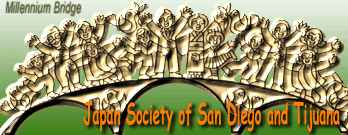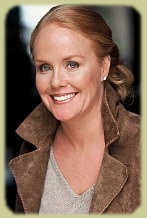Feng Shui, a Tool in your Business
Reproduced Courtesy of:

April 15, 2004
By
Cathleen McCandless
 Feng
Shui is the study of the environment and how it affects people. Feng Shui (pronounced
"fung schway") is practical, common sense observation and adjustment of factors
in our surroundings that affect us on conscious and subconscious levels at all
times. From the bedroom to the boardroom, people from all walks of life are integrating
Feng Shui into their private and professional lives. In fact Donald Trump has
practiced Feng Shui in his business dealings for many years. When asked why he
uses Feng Shui, Trump responded, "I use Feng Shui because it works." Many people
are more familiar with the concepts of Feng Shui than they realize.
Feng
Shui is the study of the environment and how it affects people. Feng Shui (pronounced
"fung schway") is practical, common sense observation and adjustment of factors
in our surroundings that affect us on conscious and subconscious levels at all
times. From the bedroom to the boardroom, people from all walks of life are integrating
Feng Shui into their private and professional lives. In fact Donald Trump has
practiced Feng Shui in his business dealings for many years. When asked why he
uses Feng Shui, Trump responded, "I use Feng Shui because it works." Many people
are more familiar with the concepts of Feng Shui than they realize.
Ergonomics
and environmental psychology are two fields based upon fundamental Feng Shui concepts.
Scientific studies have proven that human beings are powerfully
affected by their surroundings both physically and emotionally. When properly
applied, Feng Shui can have a strong impact on the prosperity and success of a
company. Feng Shui can help businesses improve employee morale, job satisfaction
and performance, which in turn increase sales and productivity.
Some
basic Feng Shui principles which business owners should be aware of are:
- First impressions are lasting impressions. The presentation
in the lobby and entrance to the building are extremely important. The subtle
impressions that a client perceives while in the lobby and entrance can have a
huge impact on the positive or negative outcomes in business dealings. Entrance
and lobby areas need to be warm, friendly, clean, and welcoming.
- Provide
direct views to the entrance of office spaces. Employees should not be seated
with their backs to the door of their office, cubicle, or workspace. It creates
a vulnerable feeling and can lead to interoffice disharmony among personally.
- Avoid placing an employee in the direct line of a door.
This creates a lack of privacy and can create a feeling of always being watched.
Additionally, it sets the employee directly in the rush of energy. This can have
negative effects on health and productivity.
- All
workstations should be clean and efficient. Machinery needs to be properly working
and maintained.
- Soft, rounded edges create a feeling
of comfort of safety. When possible, minimize sharp angles.
- People
are soothed by images of nature. Adding pictures of nature scenes, plants, and
aquariums are positive enhancements, as long as plants and fish tanks are carefully
maintained. If this is impossible, consider the addition of silk plants or a plant
service.
- Stay away from white paint on walls. It
creates too much glare and is not conducive to concentration. Soft beige's and
other warm colors feel more nurturing and reduce eyestrain.
- Use
full spectrum lighting instead of fluorescent lights. Fluorescent lighting inhibits
the proper function of the Endocrine system, which can result in poor health and
irritability.
- An ergonomically correct chair, desk,
and computer station increases job productivity and reduces sick-time and injury.
- Minimize clutter and maximize organization. Used closed
shelving whenever possible to visually calm a space down.
- The
CEO's office should be placed as far from the main entrance as possible. If the
CEO is situated too close to the entrance, they will end up micro-managing much
more than necessary.
- Pay special attention to sensory
factors in the workplace. Sounds, smells, and other elements can have positive
or negative effects on employees.
Cathleen McCandless is
a highly respected Feng Shui consultant, speaker, and teacher. Cathleen's clientele
includes Nike, Intel, Honeywell, and Loews Corporation. She has been featured
in publications such as Vogue Magazine, the New York Times and San Diego Home
and Garden Magazine to name a few. Cathleen is available for residential, business,
and industrial consultations, as well as lectures, workshops, and classes.
 Feng
Shui is the study of the environment and how it affects people. Feng Shui (pronounced
"fung schway") is practical, common sense observation and adjustment of factors
in our surroundings that affect us on conscious and subconscious levels at all
times. From the bedroom to the boardroom, people from all walks of life are integrating
Feng Shui into their private and professional lives. In fact Donald Trump has
practiced Feng Shui in his business dealings for many years. When asked why he
uses Feng Shui, Trump responded, "I use Feng Shui because it works." Many people
are more familiar with the concepts of Feng Shui than they realize.
Feng
Shui is the study of the environment and how it affects people. Feng Shui (pronounced
"fung schway") is practical, common sense observation and adjustment of factors
in our surroundings that affect us on conscious and subconscious levels at all
times. From the bedroom to the boardroom, people from all walks of life are integrating
Feng Shui into their private and professional lives. In fact Donald Trump has
practiced Feng Shui in his business dealings for many years. When asked why he
uses Feng Shui, Trump responded, "I use Feng Shui because it works." Many people
are more familiar with the concepts of Feng Shui than they realize. 
